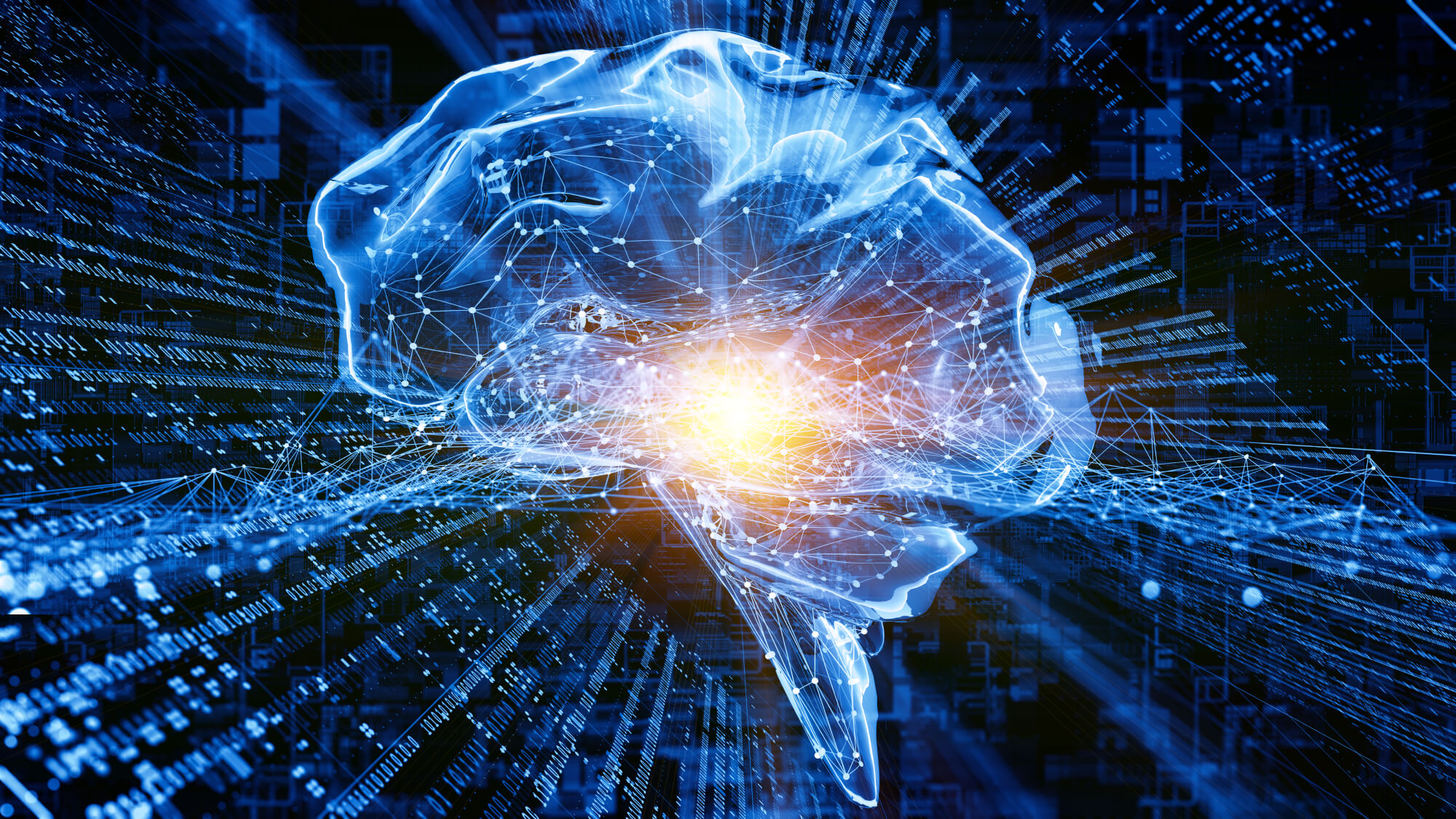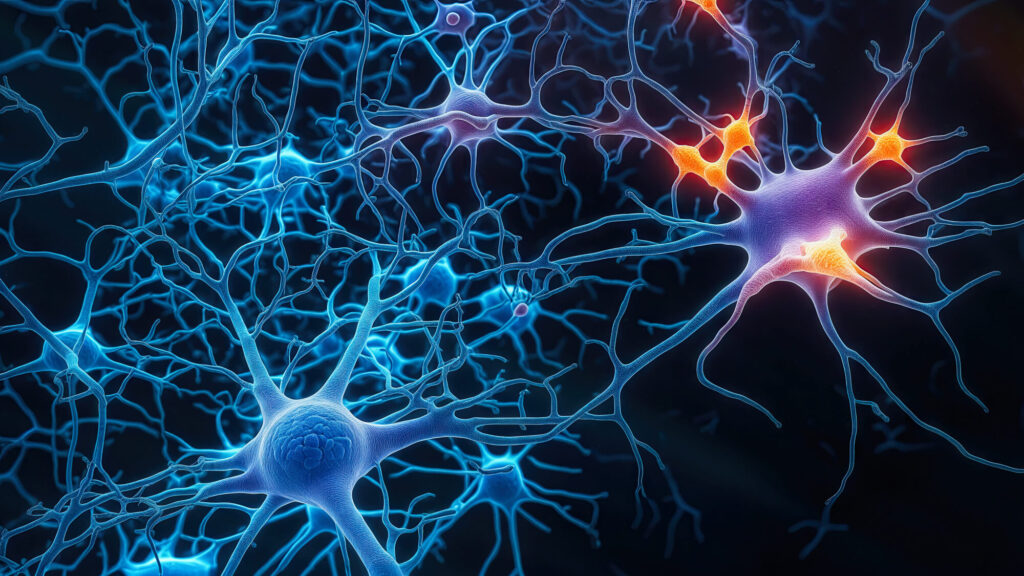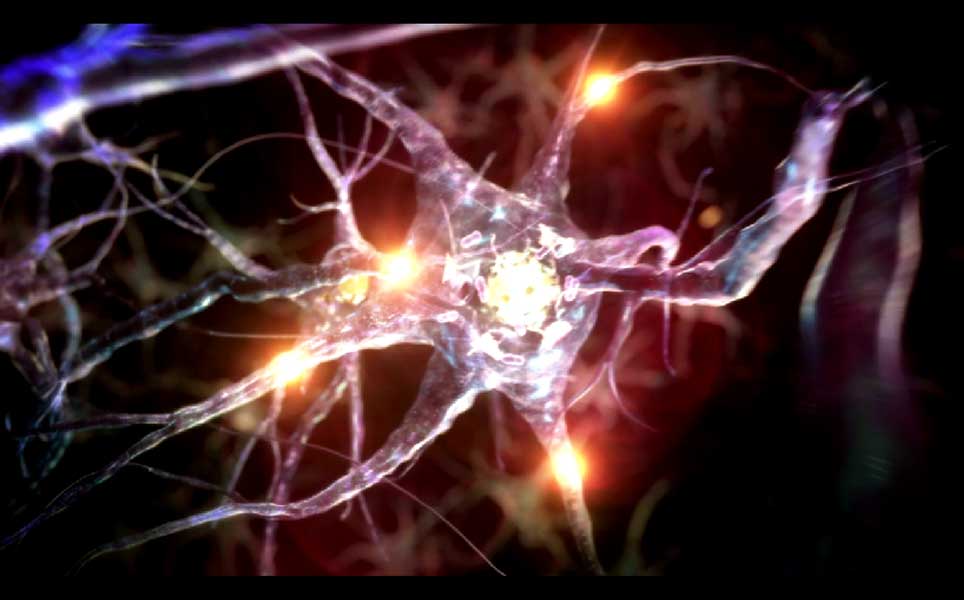

QPAN®: The Future of Personalized Neuromodulation Therapy
What is Neuromodulation? | Revolutionizing Brain Health
Neuromodulation represents a forefront method in neuroscience that applies non-invasive brain stimulation to improve cognitive abilities and neurological wellness while promoting mental health.
The therapeutic approach of neuromodulation utilizes precision-targeted stimulation to adjust brain activity and has proven to be an innovative treatment for autism, ADHD, depression, epilepsy, learning difficulties, and Alzheimer’s disease among other neurodegenerative conditions.
Cosmos® Healthcare developed QPAN ® which stands for QEEG-Guided Personalized AI-Based
Neuromodulation Therapy as an innovative AI-based therapy system that integrates:
✅ QEEG Functional Brain Mapping 🧠
✅ AI-Driven Neuromap® Analysis 🔍
✅ Repetitive Transcranial Magnetic Stimulation (rTMS) ⚡
✅ Transcranial Direct Current Stimulation (tDCS) – Home-Based Therapy 💡
✅ Our personalized data-driven approach allows us to deliver scientifically optimized treatments based on each person’s distinct brain activity patterns
How QPAN ® Works: A Personalized Approach to Brain Stimulation
Step 1: QEEG Functional Brain Mapping Quantitative Electroencephalography (QEEG) functions as a scientific brain-mapping approach to identify neurological imbalances together with cognitive deficits and emotional dysregulation.
✅ Identifies neurodevelopmental disorders (ADHD, Autism, Learning Disabilities)
✅ Maps depression, anxiety, and mood dysregulation
✅ Analyses cognitive function & neuroplasticity
✅ Detects early markers of neurodegeneration (Alzheimer’s, Dementia)
Step 2: AI-Powered Neuromap® Analysis Advanced AI algorithms enable Neuromap® to analyse QEEG data from which biomarkers are extracted to develop personalized neuromodulation protocols that focus on underactive and overactive brain regions.
Step 3: Personalized Neuromodulation (rTMS & tDCS)
✅ Repetitive Transcranial Magnetic Stimulation (rTMS) employs electromagnetic pulses to activate specific brain regions for the treatment of mental health issues and neurological recovery processes.
✅ Transcranial Direct Current Stimulation (tDCS) delivers brain stimulation in the home setting to enable widespread access to long-term neuromodulation.

Who Benefits from QPAN ®? | Personalized Brain Health Solutions
Children & Adolescents:
Autism Spectrum Disorder (ASD) benefits from improved communication skills and sensory processing abilities.
✅ ADHD – Enhances attention, focus & impulse control
✅ Epilepsy – Reduces seizure frequency & stabilizes neural activity
Adults:
Repeated Transcranial Magnetic Stimulation (rTMS) effectively manages mood and stress responses in patients with Depression, Anxiety & OCD.
✅ PTSD – Improves emotional resilience & cognitive recovery
✅ Stroke Rehabilitation – Stimulates neuroplasticity & motor function recovery
Elderly & Neurodegeneration Patients:
This treatment approach delays mental deterioration and helps maintain cognitive memory functions for Alzheimer’s and dementia patients.
✅ Parkinson’s Disease – Enhances motor function & reduces tremors
Explore QPAN ® Treatment and Learn Why AI-Driven Brain Stimulation is the Best Option
- ✅ Drug-Free, Non-Invasive Treatment QPAN’s neuromodulation method functions naturally to restore brain balance while producing minimal side effects unlike traditional medications.
- ✅ AI-Powered Brain Optimization Real-time Neuromap® tracking enables treatment plans to be perpetually adjusted for peak performance.
- ✅ Home-Based tDCS Therapy The portable neuromodulation technology enables patients to maintain their treatment regimen at home which ensures they achieve cognitive enhancements and long-term progress.
Scientifically Backed | FDA & NICE Approved
- ✅ Clinical trials have proven that rTMS and tDCS treatments provide long-term positive outcomes for neurological and mental health disorders.
- ✅ QPAN ® leads the evolution of brain health together with advancements in AI-driven neuroscience.
- ✅ Through QPAN’s expansion of neuromodulation treatment across the world, cutting-edge neuroscience becomes accessible to everyone.
- ✅ Our system performs continuous analysis on thousands of brain scans to produce new findings in neuroplasticity.
- ✅ Neuromodulation advancements for the future will blend AI technology with cognitive improvement techniques and wearable devices for brain health tracking.
Start Your QPAN ® Treatment Today! | Book an Appointment Book an Appointment
Our expertise at Cosmos® Healthcare lies in delivering scientifically validated neuromodulation therapy that is customized to fit the distinct neurological needs of each patient.
Who Benefits from QPAN? | Personalized Brain Health Solutions
Autism Spectrum Disorder (ASD) benefits from improved communication skills and sensory processing abilities. ✅ ADHD – Enhances attention, focus & impulse control ✅ Epilepsy – Reduces seizure frequency & stabilizes neural activityWho Benefits from QPAN? | Personalized Brain Health Solutions
Repeated Transcranial Magnetic Stimulation (rTMS) effectively manages mood and stress responses in patients with Depression, Anxiety & OCD. ✅ PTSD – Improves emotional resilience & cognitive recovery ✅ Stroke Rehabilitation – Stimulates neuroplasticity & motor function recoveryWho Benefits from QPAN? | Personalized Brain Health Solutions
Elderly & Neurodegeneration Patients: This treatment approach delays mental deterioration and helps maintain cognitive memory functions for Alzheimer's and dementia patients. ✅ Parkinson’s Disease – Enhances motor function & reduces tremorsExplore QPAN ® Treatment and Learn Why AI-Driven Brain Stimulation is the Best Option
Drug-Free, Non-Invasive Treatment QPAN's neuromodulation method functions naturally to restore brain balance while producing minimal side effects unlike traditional medications.What is QPAN® Model: Revolutionizing Neuromodulation and Brain Health
The QPAN® Model serves as an advanced scientific framework that creates personalized brain health and cognitive performance optimization solutions. This model integrates advanced neuroscience discoveries with modern technological tools and holistic treatment methods to deliver distinctive personalized care for each patient. The QPAN® Model utilizes brain mapping knowledge alongside neuromodulation technology and customized lifestyle changes to provide precise and attentive solutions for different neurological and cognitive issues.
The QPAN® Model starts with a fundamental understanding of individual brain function as its primary component. A detailed examination using Quantitative Electroencephalography (qEEG) creates an in-depth perspective of brainwave activity. The results deliver a functional brain map which functions as a detailed blueprint showing the specific brain regions needing targeted treatment. The treatment strategy adapts to the unique neurological requirements of each individual through this data-oriented methodology.

From Brain Mapping to Personalized Treatment
The process starts with qEEG brain mapping , which serves as a robust diagnostic tool to observe brain activity. A non-invasive procedure records brain electrical activity patterns which helps identify regions of dysregulation or imbalance. Patterns identified in the brain are frequently associated with mental health disorders like anxiety and depression as well as neurological conditions including ADHD and autism spectrum disorders and neurodegenerative diseases. The clinical interpretation of qEEG findings leads to the development of a Neuromap that serves as an individualized treatment guide.
The QPAN® Model depends on the Neuromap as a fundamental element. The Neuromap determines which brain regions need modulation while explaining their role in affecting behavior and emotions and cognitive processes. The collected data serves as the foundation for developing a treatment plan customized to integrate multiple essential elements.
1- Nutritional advice should be customized according to the brain’s functional requirements to promote brain health and cognitive abilities while correcting any nutritional deficits that impact performance.
2- Education through personalized learning strategies which are tailored to match the person’s cognitive profile helps improve focus and memory by leveraging brain strengths and overcoming cognitive weaknesses.
3- The sports and activities programs combine structured physical exercises with cognitive tasks to boost well-being while stimulating neuroplasticity and balancing emotions.
Cutting-Edge Neuromodulation Techniques
The QPAN® Model incorporates neuromodulation technologies into its treatment system to deliver effective and accessible interventions. Two key techniques form the cornerstone of this approach: The QPAN® Model uses two central neuromodulation techniques which include Repetitive Transcranial Magnetic Stimulation (rTMS) and Transcranial Direct Current Stimulation (tDCS).
rTMS Treatment at the London Clinic
The London clinic provides exclusive access to rTMS for patients who need to receive care in person. The non-invasive rTMS procedure utilizes magnetic fields to target brain regions which boosts neuroplasticity and restores balance to dysregulated areas. This advanced therapy provides a secure evidence-based treatment for complex neurological conditions under the supervision of highly trained professionals.
tDCS Remote Treatment: Comfort in Your Home
tDCS provides an innovative solution for home-based treatment that delivers both convenience and flexibility to its users. This wearable headset sends low electrical currents to specific brain zones to enhance brain function while fostering neural adaptability. Patients can maintain their treatment consistency by following their customized plans at home while eliminating the necessity for regular clinic appointments.
A Holistic Approach to Brain Health
The QPAN® Model functions as a complete brain health strategy rather than just a treatment framework. The combination of qEEG-guided Neuromap insights with advanced neuromodulation technologies and lifestyle changes delivers comprehensive care that covers all elements of a patient’s health. The model provides power to individuals by enabling them to reach their brain’s full potential beyond symptom treatment.
The approach targets people who want sophisticated treatments for both cognitive difficulties and neurological disorders. The QPAN® Model delivers unmatched flexibility and effectiveness in both clinic-based rTMS and distant tDCS applications.
The QPAN® Model creates a crucial link between neuroscience and tailored patient care which marks a major advancement in neuromodulation technology. The integration of advanced technological solutions with patient-centered approaches makes the model a shining symbol of hope for individuals who aim to achieve perfect brain function.
Understanding the QPAN® Model
The QPAN® Model enables users to turn raw EEG data into detailed functional brain maps.
The QPAN® Model marks a significant advancement in brain research and wellness by providing a detailed framework for both understanding and enhancing brain function. A fundamental element of the QPAN® Model involves converting brainwave data into actionable insights to develop a functional brain map. Quantitative electroencephalography (qEEG) powers this process by making it possible to examine the detailed workings of brain activity. The subsequent section presents a comprehensive examination of how this advanced procedure operates.
The initial stage of data acquisition involves collecting raw EEG data through a method that respects patient safety while ensuring precise measurements. The scalp receives soft electrode placement to capture the brain’s electrical signals. Neurological processes depend entirely on brainwave signals which represent electrical activity in the brain. The EEG records electrical activity from various brain regions to deliver immediate insights into brain communication and function. The information contained in this data is extensive yet demands sophisticated technology to derive meaningful insights.
The raw EEG data moves through an intensive preprocessing phase to maintain its accuracy and clarity after recording. Researchers eliminate noise and artifacts that originate from muscle movements and eye blinks as well as external interferences in this specific step. Advanced algorithms eliminate these unnecessary signals to retain only the brain’s genuine electrical patterns. The preprocessing phase guarantees that the following analysis depends solely on the most dependable and precise data available.
Once EEG data has been cleaned the process moves forward with quantitative analysis (qEEG). Modern neuroscience demonstrates its true strength during the execution of quantitative EEG analysis. Through advanced computational methods researchers can decompose brainwave activity into its fundamental frequencies which include Delta, Theta, Alpha, Beta, and Gamma waves. Specific brain functions operate at different frequencies which span deep sleep states to attentive cognitive processes. The qEEG analysis moves beyond frequency measurement to assess how different brain regions connect with each other to reveal interaction patterns and coordination dynamics. By evaluating brain connectivity patterns researchers can detect regions that display hyperactivity and underactivity dysregulation.
The qEEG findings gain meaning through comparison with established normative databases. These databases function as extensive collections of brainwave data which represent healthy subjects from multiple age groups, genders and demographic backgrounds. The QPAN® Model uses comparisons between a person’s brainwave patterns and established benchmarks to spot deviations and imbalances which might be associated with neurological or cognitive difficulties. Through this comparison process researchers convert raw data into an evidence-based comprehension of how the brain functions.
This procedure results in a functional brain map which acts as a visual and comprehensive representation of how the brain functions. The functional brain map illustrates regions with abnormal activity and dysregulation which serves as a precise guide for targeted therapeutic interventions. The map serves as more than just a diagnostic device because it underlies the full development of personalized treatment programs. The functional brain map provides critical understanding of brain region functions in cognitive and emotional processing to direct neuromodulation treatments and lifestyle changes.
The QPAN® Model demonstrates its effectiveness by converting functional brain maps into individualized treatment strategies that patients can act upon. The treatment plan for each person targets their brain-specific characteristics and particular challenges they face. The treatment approach relies heavily on neuromodulation therapies. The London clinic provides rTMS (Repetitive Transcranial Magnetic Stimulation) as a non-invasive procedure to activate or control particular brain zones. Magnetic field treatment improves brain plasticity which proves very effective against depression, anxiety, ADHD and autism.
Homebound patients can benefit from the QPAN® Model which provides revolutionary tDCS (Transcranial Direct Current Stimulation) technology. The portable headset operates as a user-friendly device which channels low-level electrical currents to specific brain regions resulting in enhanced functionality and adaptability. Patients can access top-notch neuromodulation treatments at home through personalized plans which eliminate the necessity to visit clinics often.
The QPAN® Model extends its applications beyond neuromodulation by utilizing functional brain map insights to develop lifestyle intervention programs. Customized dietary regimens are created to enhance brain health by correcting nutritional deficits and maximizing nutrient consumption. Learning approaches receive personalized adjustments based on an individual’s mental strengths and weaknesses which leads to better educational results and improved memory preservation. The programs include physical activity and structured sports exercises to enhance neuroplasticity and improve overall well-being.
The QPAN® Model remains flexible and responsive as it adapts to the personal advancement of the individual. Frequent qEEG evaluations enable continuous observation of brain activity changes which facilitates ongoing treatment plan adjustments. The iterative approach guarantees that interventions maintain their effectiveness while adapting to new developments in the individual’s requirements.
The QPAN® Model combines progressive neuroscience approaches with customized care strategies alongside functional solutions. The QPAN® Model processes EEG data into detailed brain function insights while enabling specific interventions that support enduring mental health and cognitive stability. The QPAN® Model establishes a new benchmark in neuromodulation and brain health by connecting technological advancements with individualized healthcare solutions.